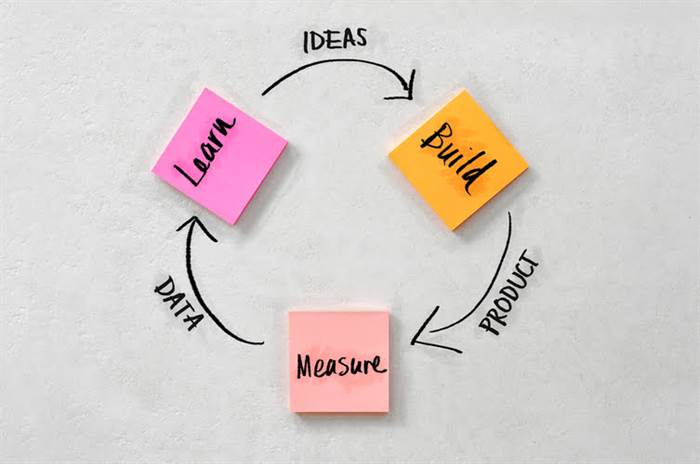Organizations usually make use of either a grassroots or big-bang knowledge strategy—neither of which allows them to make the most of their knowledge investments.
This enhances decision-making processes and creates new potentialities for generating worth from information belongings. In essence, Data as a Product entails recognizing the intrinsic value of information and leveraging it as a tangible offering available within the market. It’s a means for companies to monetize their information belongings and supply additional worth beyond their core products or services. “Data product” is a generic idea (as defined above) and “data as a product” is a subset of all possible data products. More specifically, if we use Simon’s classes, “data as a product” belongs to the raw or derived knowledge sort of “data product”.
One of the most notable metrics used to judge product/market fit is the Sean Ellis test (also generally recognized as The 40% Test). The rule is straightforward; if 40% of surveyed customers say that they would be “very dissatisfied https://www.globalcloudteam.com/” if they may no longer access the given product, then the product is on the successful facet. Let’s return to our 9 managers in a gathering room making massive strategic and operational choices.
Rangkuman:
Managing Data As A Product: What, Why, How
We are additionally seeing the rise of Platforms-as-a-Service to supply capabilities to create and manage knowledge products. Their capabilities can embrace automated and proactive discovery of anomalies, root trigger analysis, monitoring, notifications and recommendations to fix anomalies. The finish result’s greater reliability of information products and expedited remediation of errors. These modifications emanate from numerous sources and SaaS functions used to build the data merchandise with no warning. These “anomalies” may pertain to adjustments in schema, late and out-of-order arriving knowledge or knowledge entry errors.
- As knowledge catalogs are a single pane-of-glass to find information, they should even be prolonged to include information merchandise.
- This is essential for those organizations that envision self-serve analytics and want to use data as an asset and not just as a bypass for building a visualization.
- So, such as you plan out your knowledge product portfolio, set SLAs, and start treating data as a product, make it a point to collaborate with your main knowledge consumers.
- The systematic approach outlined for teams to apply the Data as a Product approach serves as a guide for organizations trying to unlock the complete potential of their knowledge.
The potential power stored inside information has been rising for years, but prescriptive points with folks, processes and expertise are keeping it locked away and rendering it redundant. The potentialities of releasing that vitality with a new tightly scoped, pragmatic strategy to information are infinite. It’s time to redefine our organizational relationships with knowledge and turn into truly and sustainably agile. They are treating information not as a project, but as a product; one that is accessible, seen and usable for everyone, regardless of their discipline or need. They are empowering their folks to think in a unique way and modernizing their processes to work differently when it comes to unlocking insights. They are altering the best way they see information at every level, for each consumer, in every line of labor.
The Method To Build Great Data Products
The first iteration for this capability could be only a record of datasets in your de facto internal intranet and you may iterate and build incrementally from that. Remember that processes and tradition are more essential than deploying the last word information catalogue device too early (which could be too advanced for employees to use). You should look after your information, arrange it, and make it simple for information residents and end users to locate, belief, and use. And it is up to you, as a corporation, how you manage that information and deal with it as a product.

Rather than treating information as a mere byproduct of enterprise processes, organizations are now strategically amassing, processing, and packaging knowledge to create marketable products. This shift signifies the recognition of data as a useful asset that may enhance internal decision-making and generate income by offering useful insights to external entities. The data group must shift from treating information as a project to information as a product.
Every Thing You Want To Know About Modern Data Catalogs
These permit well-trained customers to make use of them to at their own tempo and come back to the data at any time without having to depend on an information analyst. Now that we now have defined information as a product, we don’t have to mistake it with knowledge as a service or with knowledge merchandise. The information administration area has steadily been adopting well-tested software growth life cycle methodologies, like DevOps and observability. Now the main focus has shifted to adopting agile development practices and product management to data and analytics.
You can think about it with Legos if you wish to get artistic right here (as Emilie and Taylor did in their unique LO piece). Each inside course of and tool is, by itself, an individual lego, however united together they construct and fortify a bigger data product (like a flowery Lego lair). Once a data team has abstracted the underlying principles of profitable level solutions and reused them to solve an array of business problems, they have achieved data as a product. You need the senior administration on board to transition into a product-led group for knowledge. Treating your data analysts as providers of data in spreadsheets won’t present a competitive advantage in the long term so you need to encourage the attitude of those that request those spreadsheets within the first place.

In summary, information as a product considers data property as standalone products that have worth by themselves as a end result of it helps answer the questions decision-makers have. Checking information quality frequently and mechanically is a should to fulfil the reliable attribute of information as a product. And owners of the datasets have to react accordingly to the results of these checks. This implies that any digital product or characteristic could be thought-about a “data product” if it makes use of knowledge to facilitate a goal. For example, the house web page of a digital newspaper can be a data product if the information gadgets featured in the house page I see are dynamically selected based on my previous navigation data. Moreover, now you might have a better knowledge of what knowledge as a product and information products are; and may utilise the knowledge to create, buy, or deal with such concepts in the coming years.
Some organizations adopt subscription fashions the place inside prospects pay often for entry to up to date datasets or ongoing knowledge services. Organizations must maintain excessive knowledge high quality and governance standards to ensure the data’s marketability. This includes making certain accuracy, reliability, and compliance with privacy rules to build trust among potential shoppers. Data is a useful resource that may provide insights, assist decision-making, and drive innovation.
Some information literacy packages aren’t incorporated into enterprise technique, whereas others are treated as facet tasks that are not given the attention they deserve. However, two of the most typical causes for failure are the one-size-fits-all strategy and the failure to reinforce learning. K. Prahalad warn corporations of the risk they run if they can not get a view of the wants customers can’t articulate. Despite the out there needs-gathering strategies, information teams fail to uncover all and even most of the buyer’s wants.
While an organization might need lots of of use cases on its highway map, they usually fit one of 5 primary consumption archetypes. Data merchandise constructed to support a quantity of of these consumption archetypes can simply be utilized to multiple business functions Data as a Product with comparable archetypes. Developed in 2018 by Zhamak Dheghani, the director of rising technologies in North America for ThoughtWorks, information mesh has turn into a controversial topic in Data Management discussions. It provides an various selection to the shortcomings of a centralized architectural mannequin.

Or it might ship a given knowledge functionality, such as a digital twin that replicates the operation of real-world property. It is controlled by completely different departments or places of work – marketing, gross sales, customer support – rather than a single location. Data as a product, then again, is a mindset that combines tools and strategy to treat knowledge as a product consumed by inside prospects (in-house staff).
Metadata is essential for supporting knowledge governance initiatives, regulatory compliance standards, and information administration procedures because it helps comprehend the data behind the information product and represents how it is handled. The house owners of an information product are additionally accountable for maintaining agreed levels of service. This is important because without clear accountability, there may be complicated processes and competing priorities to cope with when providers go down.
At Thoughtworks, we’ve tailored the Double-Diamond design process model to be sure that we construct the proper thing and build it right. We use a structured discovery and inception process to uncover these requirements for any new data product. We then apply a set of well-understood practices and tools which are identified to ship high-quality software program and knowledge. Success in product growth requires an working mannequin that ensures dedicated management and funding, the establishment of standards and best practices, performance monitoring, and high quality assurance. Our data products also want documentation to clarify what phrases mean, the method to use them properly, the info scope, dimension, history, efficiency expectations, etc. Next time you create a dataset for consumption, ask your self whether or not documentation is adequate.
It might be a data desk, a group of tables, a dashboard, a report, notebooks, and so forth. So, when it comes to pipelines and processes, make the most of the identical tried-and-true practices that you’d with manufacturing software program, corresponding to producing scope papers and dividing projects into iterations. If you’re trying to make a scrumptious meal with tomatoes, it stands to reason that the freshness and quality of those tomatoes will directly affect the recipe as a whole. This implies that the completed end result strongly depends on the components’ quality.
Most businesses have held information in an organizational bubble for generations. Data Analytics groups have historically supported core businesses, and as knowledge grew more and more essential in decision-making and product success, data pipeline teams were thought of more like workers than companions. For instance, retail organizations use numerous metrics to facilitate demand planning (e.g. forecast accuracy, order fill rate). Different groups depend on these metrics to forecast and provision stock to satisfy the demand. Any delays or errors in reporting can have severe impacts to downstream enterprise processes, resulting in sad clients and a lack of income or a surplus of stock with a value to enterprise.